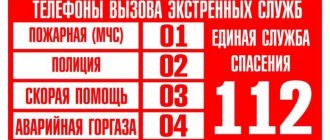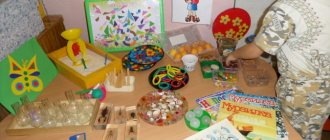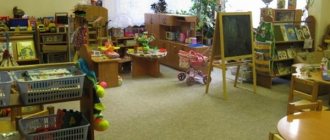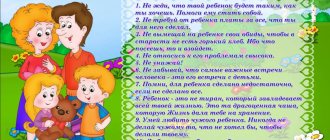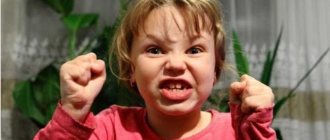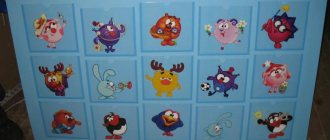Good afternoon, dear readers! Today we have an interesting and important topic on the creative development of children. Decorating fine art corners is also an art. There is no doubt that the majority of preschoolers love to draw. This is how they discover and explore the world, learn new things. You can familiarize yourself with the corresponding useful publication by the author N.G. Panteleeva. Kids enjoy drawing and being creative in art classes. Some of the children like to look at albums with paintings by artists or folk crafts. The development of aesthetic taste and creativity is undoubtedly the most important point in education.
DIY creativity corner
Irina Serganova
Do-it-yourself creativity corner
Creativity corner (decoration)
in the second junior group.
Hello my dear friends, colleagues and just guests of my page of our favorite site! I hasten to share with you photos of the design of the creativity corner in my group . I try to decorate from available materials, such as cardboard boxes. This is a very good material not only for decoration, but also for kindergarten crafts.
At first it was just a table with two drawers, which was placed between the cabinet and the theater screen. The table was turned towards the wall with drawers so that children could not open them for safety reasons.
I bought a shelf at Fix Price on which I placed plastic cups with colored pencils.
I drove two nails into the wall, tied a string, and attached the children's work to clothespins.
The corner has everything you need for children's creativity : there is glue, brushes for glue and painting, stamps.
Stencils for tracing
Albums and a large number of coloring books for both girls and boys.
Colored paper, cardboard, plasticine, gouache.
Easel for drawing and exhibition of children's works.
This is the design I came up with for the children's creativity corner .
Thank you so much to all colleagues for your votes and support!
Do-it-yourself busy board A child who learns about the world around him strives to touch and try everything. To give them the opportunity to play with all sorts of things to their heart's content. Do-it-yourself busy board The child enjoys exploring the world around him. He is interested not only in toys, but also in all objects around that may pose a danger: DIY games Hello, SUMMER! So much sun! How much light! So much greenery all around! What is this? This SUMMER is finally rushing into our house. There is a diversity of songbirds. DIY felt painting of a corner of nature Hello, this time I would like to tell you about a visual aid I made with my own hands. Naturally, the idea is not new and is possible somewhere. Do-it-yourself carpet rug A carpet rug is a fascinating and unusual educational tool for children of any age. It can be used in groups and individually. Do-it-yourself laptop on traffic rules In connection with the implementation of the Federal State Educational Standard for preschool education, every teacher is looking for new approaches, ideas, forms and methods in their teaching activities.
DIY frame DIY frame. Objectives: Educational objectives: to expand students’ knowledge about the variety of crafts made from waste material; introduce the species.
Do-it-yourself theater A preschool child is a real listener, dreamer, researcher. When playing a fairy tale, children use various types of theater. Question. Do-it-yourself sensory development corner in an early age group Bondarenko I. A., Barsukova L. I. DS “Cosmos” Volgodonsk Sensory development of a small child is a necessary component for.
Source
Main differences by age group
Children of the younger age group show the greatest interest in drawing. To acquire drawing skills, it is recommended to purchase wax boards and appropriate dry-erase markers. You can also use rolls of wallpaper. They can be mounted on a wall or table. Kids also love to draw with their fingers and palms. For this it is better to use special paints.
For middle preschool age, it is better to organize activities in micro groups of 2-4 children. Successful introduction at this age occurs with modeling, design, and appliqué. You can also begin to introduce children to non-traditional creative techniques. For example, drawing with cotton swabs, printing with foam rubber, candles, corks, drawing with sand, collage. You can use the advice from the book by Morozova D.V.
Older preschoolers are already interested in even more diverse creative and design techniques. I recommend that you familiarize yourself with the publication “Design in kindergarten. Senior group. Notes. Federal State Educational Standard" . Crafts and homemade designs become more complex due to the experience gained in new forms.
Please pay attention to the publication "Crafts for kindergarten" . It is important at this age to cultivate greater independence and self-organization. You can use the following topics: blotography, plasticineography, imprinting with crumpled paper, spraying, drawing with salt. In the preparatory group, more complex experiments can be carried out. For example, drawing on the damp surface of a leaf, blowing droplets across the leaf area.
Corner “Our creativity”. Design option for a creative corner for an exhibition of children's work
Oryshchenko Galina Andreevna
Corner “Our creativity”. Design option for a creative corner for an exhibition of children's work
Hello, dear colleagues, friends and just guests of my page! I present to your attention an option for designing a creative corner for an exhibition of children’s works in the reception area “ Our Creativity ”.
When we moved to a new group, we did not have a special corner for hanging our children's creative works . And then a brilliant idea came to my mind! Why not make a corner “ Creativity of our children ”
with your own hands! And this is what came of it!
To create it I needed:
• Paint “Ruduga-26”
for ceilings and walls
(for children's institutions)
water-based, acrylic white, matte, economical;
• Kohler paint of different colors;
• Clothespins or clips for fastening works ;
• Glue liquid nails + gun;
• Colorless acrylic varnish for finished works ;
• Wide wooden slats for decorating birch trunks ;
• Thin plywood for the tree crown;
• Artificial leaves for decorating tree foliage ;
• Decorative elements of butterflies and flowers to decorate the finished corner ;
The creative corner turned out to be bright and big! Children like to display their work on a stand and then look at it with their parents in the evening.
Corner of creativity and fine arts. Art Centers
All kinds of creative corners, arranged on tables, cabinets, cabinets, or simply on window sills, are presented in the illustrated publications in this section.
See how your colleagues were able to competently and efficiently use the available space to optimally place their art corner for children. Special attention is paid to placing the necessary drawing supplies in it conveniently and in perfect order. Some of the materials are devoted to the design of stands for the “vernissage” of children’s works.
Ready-to-use ideas for arranging art corners.
Art corner “Fireworks of magical colors” in the middle group
Presentation of
the art corner “Fireworks of magical colors”
in the group
“Pochemuchki”
“Children should live in a world of beauty, games, fairy tales, music, drawing, fantasy and
creativity ” V.A.
Sukhomlinsky It is from this position that we try to organize the entire development space of our group. Joint activity of the teacher and the child in the creativity corner. The role of nursery rhymes in visual arts
Good afternoon everyone.
I would like to share my games and ideas for the creative corner in the first junior group.
I am attaching the goals and objectives of the toys I made to understand their connection with nursery rhymes and visual arts. A large turtle walked and trembled all over with fear. Publication “Project “Involving children in independent activities in the art corner. » Project “Involving children in independent activities in the arts and crafts corner through the production of Dymkovo folk toys” MBDOU “Kindergarten “Rodnichok”, Souzga village Completed by: Svetlana Nikolaevna Yurkina, teacher, IKK Relevance of the project topic: the project is aimed at stimulating children.
Art corner in kindergarten
Drawing and modeling not only develop fine motor skills, stimulate imagination and imaginative thinking, but also teach you to compare the resulting result and the original, analyze the shape of objects and ways of conveying it. Creative activity forms in a child perseverance, determination, a desire to try something new, to express himself and show his vision of the world.
A striking example of how to properly design a fine arts corner in a kindergarten
Therefore, in the kindergarten group it is necessary to provide a place for artistic activities. A place where a child can independently engage in creativity should be characterized by the presence of all the necessary materials:
Reproductions of paintings, folk crafts (painted nesting dolls, clay toys, trays and patterned wooden spoons) and small plastic sculptures will help expand your understanding of the beauty of the surrounding world.
It is also important to provide a stand in the group to display children’s drawings and plasticine figures.
Important! Praise encourages the child to continue creating and he becomes more confident.
Composition of the art corner for junior, middle and senior groups
The composition of the zone will change as preschoolers mature. For the youngest, you can focus on the following materials. For furniture, a table with a lid, a chair according to age, and a magnetic board are recommended. You also need paper of different textures, cardboard, stickers, and whatman paper. Cups of pencils, crayons, and felt-tip pens are welcome. You will need aprons, trays, oilcloth tablecloths.
In the corner you can hang a calendar with reproductions of various paintings by famous artists. Every month the picture will change. You can also hang illustrations of different genres: portrait, landscape, still life. It is good to arrange, as mentioned above, templates and coloring pages for children on different topics. Albums made from children's drawings are also useful for children's attention.
Ingredient materials for the junior group corner:
- Colored pencils (primary colors are sufficient);
- Paper white and colored;
- Gouache paint (you can offer 3-4 primary colors for now);
- Brushes, stands;
- Plasticine, sculpture clay;
- Napkins;
- Silhouettes, stencils, templates for objects of simple shapes;
- Albums with illustrations corresponding to the theme of the week;
- Folk arts and crafts toys (horses, nesting dolls);
- Didactic games.
I would immediately recommend the useful guide “Sensory development of children 2-3 years old. Color. Form. Size. Didactic games and exercises for organizing joint activities between the teacher and young children. Federal State Educational Standards DO " .
Components for the corner of the middle group:
- Colored pencils in a wider range than in the younger group;
- Paper of different colors;
- Felt pens, colored crayons;
- Gouache paint (6 pcs);
- Brushes, stand;
- Sculptural clay, plasticine, napkins, tablets;
- Stencils appropriate for age group;
- Toys painted in Dymkovo;
- Natural material, loose and dense;
- Creative box with junk items;
- Schemes for making various crafts;
- Didactic games;
- Examples of Gorodets painting, Filimonov toys;
- Reproductions of paintings by artists (paintings, graphics);
- Small sculptures;
- Collection albums with illustrations on the theme of the week.
I highly recommend getting acquainted with the educational and methodological guide “Visual activities in kindergarten. Middle group" .
Components for the senior group corner:
- Paper of different structures, types, colors;
- Pencils of various colors up to 24 pcs.;
- Gouache paints, watercolors up to 13-16 colors;
- Water, jars for water;
- Palettes;
- Felt pens, wax crayons, regular school crayons;
- Brushes;
- Plasticine, materials for modeling;
- Toolkit for applications;
- Stencils on different themes;
- Examples of arts and crafts;
- Small sculptures;
- Models of products;
- Art reproductions;
- Didactic games;
- Natural materials;
- Subjects on non-traditional drawing;
- Book materials on various genres of painting and architecture;
- Albums with illustrations corresponding to the theme of the week;
- Availability of artistic handicrafts.
Federal State Educational Standards requirements for creation and design in preschool educational institutions
According to the requirements of the educational standard, an activity corner must be provided in a well-lit place. Furniture and materials must be of high quality. The content of the corner should correspond to the age of preschool children, and creative materials must be changed from time to time or supplemented with new ones.
The most optimal furniture for a corner is a cabinet with open shelves on which you can place inspiring items (albums, reproductions of paintings), and isolate the materials necessary for creativity (paper, glue, scissors) from children and store them in a closed bedside table or drawers. Or it could be a table combined with a shelving unit.
For your information! For organized storage of all necessary materials (cardboard, paints, plasticine), you can use boxes of different colors or plain ones with bright symbols of the contents.
To maintain a creative mood, you can add an easel, on which it is useful to mount a painting by a famous artist for inspiration or the best work done by the children.
For storing pencils, brushes, as well as natural (cones, shells, grain, etc.) and waste (buttons, sequins, beads, etc.) materials, plastic or tin glasses of the same size and bowls are suitable.
Analysis of the design and operation of the art corner
In kindergartens, competitions are often held for the best design of the art corner.
An example of furniture arrangement in the fine arts corner
However, any teacher can analyze the pictorial corner in the kindergarten - you just need to answer the following questions:
An art corner organized in a group in a kindergarten helps develop a child’s creative abilities, instill artistic taste and teach children to independently look for ways to depict their fantasies.
Source
Visual materials in the fine arts area
Visual materials play an important role in the corner. That is, these can be reproductions of famous artists, portraits of the authors themselves. It is also recommended to post materials on applied arts. For example, these will be albums on the themes “Khokhloma” or “Gzhel”. It is good to replenish the area of fine art materials that were studied in classes with children.
It is recommended to add several toys from folk crafts to the design of the fine art corners. For example, it will be a matryoshka doll and a carved horse. Undoubtedly, postcards, perhaps dedicated to passing holidays, will be a good decoration for the Fine Art corner. Such as March 8, Victory Day, New Year, etc.
Guidelines for decorating a creativity corner
Zhanna Dilman
Guidelines for decorating a creativity corner
Guidelines for decorating a creativity corner
According to the modern educational standard (FSES),
the design of creativity centers in a group must meet the following requirements:
1. The corner is located in a well-lit area (near the window)
place.
2. The equipment meets the needs of the given age. After all, each age category is unique. For example, younger preschoolers are in the process of adaptation, so the teacher does not need to change the design . Children's attention should not be distracted by unnecessary details. In addition, the creativity corner should contribute to the development of children’s sensory skills. At an older age, conditions for self-expression are more important.
3. Materials for creativity and aesthetic development (for example, picture albums)
should be freely available to preschoolers so that they feel like
“masters”
in the group.
4. High aesthetics. A good corner attracts children's attention with its beautiful design . The guys should feel comfortable there. “childish” that is important
design - inclusion of
game characters in the design (pictures and dolls, creative works of students .
5. Multifunctionality. The gaming environment can be modified depending on the learning situation, combined with other zones. After all, groups are not very large rooms, so every meter must be used rationally Equipment and materials should be easily transformed to create a new game. For example, with the help of the creativity corner you can organize a role-playing game “In the artist’s workshop”
(combined with
the theatrical corner ) .
6. Variability. The equipment of the zone changes periodically: new material for creativity , children's demonstration works and design . In addition, conditions should be created the corner (for example, drawing, modeling, coloring pictures)
and group activities.
7. Safety and high quality of materials used in creating the zone. This applies to both furniture and means for directly equipping the corner (for example, scissors and glue should be stored in boxes with a lid)
.
8. Compliance with the gender principle. As you know, boys and girls have their own preferences. The teacher should take this point into account when selecting material in the creativity (in particular, offer coloring pages with cars, airplanes, robots and princesses, flowers, butterflies, etc.).
Occupancy of the creative center in groups :
1st early age group and 2nd early age group
Materials for creativity are given to children under the supervision of an adult.
Senior and preparatory groups
Paper of different sizes, shapes, textures and colors, colored pencils from 12 to 24 pcs, gouache 9-12 colors, watercolor 12-16 colors, jars for washing paint brush lint, fabric napkins, colored wax crayons, felt-tip pens, brushes, plasticine, stacks, modeling boards, oilcloths for covering tables, equipment for appliqué: scissors, paper of various sizes and colors, glue brushes, napkins, stencils for dishes, vegetables, fruits, etc. Silhouettes of animals, birds and humans, coloring books for girls and boys, materials on non-traditional drawing techniques: pokes, candles, toothbrushes, cotton swabs, stamps, samples of mixing paints (for example, white + red = pink, etc., the presence of diagrams of the sequence of drawing, sculpting, applications taking into account age and gender specifics.
Aesthetics, beauty and creative change
We introduce beauty from an early age. The Fine Art corner should be not only practical, but also beautiful. It needs to be designed so that preschoolers can admire its appearance. That is, they learn to appreciate beauty and acquire the ability to enjoy it. The inclusion of children in the design of toys and children's works also plays a big role. This is how we begin to develop “childish” design in children.
Of course, if the objects in the corner do not change for a long time, the children will begin to lose interest. From time to time, as you study a new topic, you need to change and add materials. Also, conditions for children’s creativity must be created in the corner. Children should have the opportunity to sit next to a corner, color a picture or look at an album with creative works.
